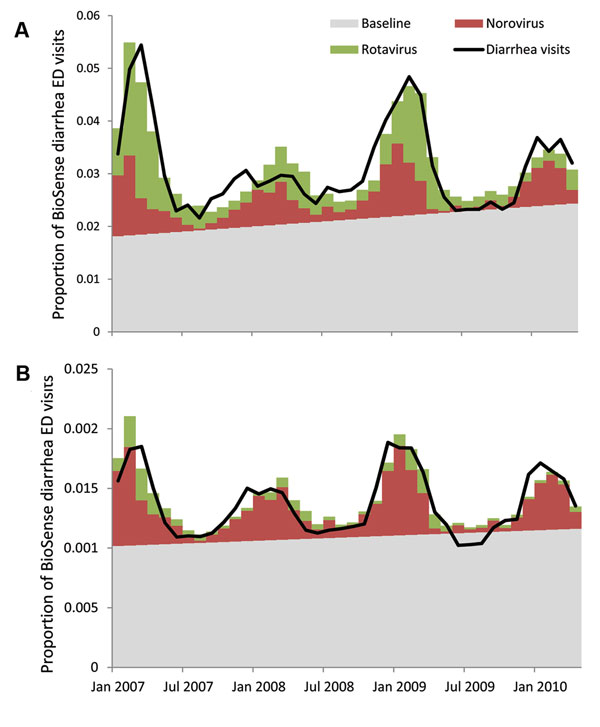Volume 19, Number 8—August 2013
Research
Emergency Department Visit Data for Rapid Detection and Monitoring of Norovirus Activity, United States
Figure 2

Figure 2. . . Model attribution of the proportion of BioSense emergency department (ED) visits mapped by chief complaint to diarrhea subsyndrome compared with estimates of norovirus and rotavirus infections, United States, January 2007–April 2010. A) Patients 0–4 years of age; B) patients of all ages. Predicted norovirus largely accounted for the observed seasonal variations in the proportion of diarrhea visits in the all-ages group (17.5% of predicted total, January 2007–April 2010), with rotavirus making a smaller contribution (4.7%); norovirus (13.6%, August 2007–April 2010) and predicted rotavirus (13.6%) equally accounted for the seasonality in the 0–4-year age group. All other etiologies captured by the background and secular increase (baseline) did not contribute to the observed winter seasonality.